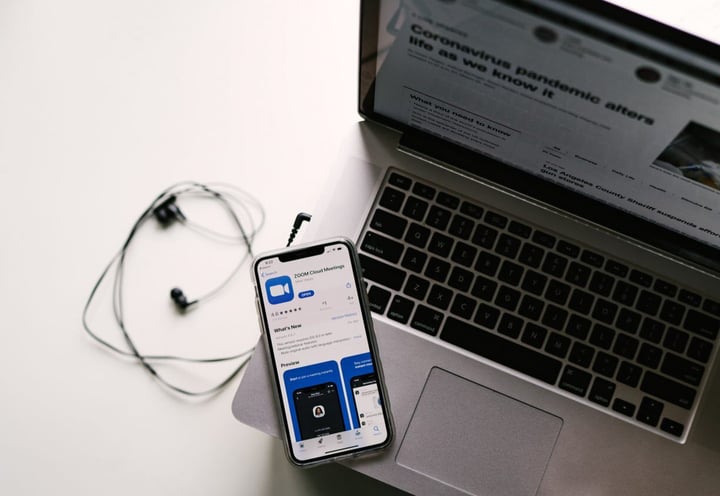
From better morale to a better bottom line, Forbes Coaches Council reports that there are several major benefits for businesses that increase diversity and inclusion in their organization. Although this initiative is long overdue, organizations may still not always know where to find the resources they need to succeed.
As the development of a more diverse candidate pool continues to become an integral priority for CPG companies today, we spoke with Jamal Watson — Assistant Vice President, Media Relations and Communications, at Thurgood Marshall College Fund — as well as Lia Jones, Executive Director, and Elan Glasser, Director of Operations, from Diversity in Wine and Spirits for insights on how to begin. Here are four highlights for guidance:
1. Show you mean business
“It is important that employers demonstrate that their workplace embraces diversity and inclusion, and that it values the contributions of everyone,” says Watson. “What’s really important for us is making sure people are hiring because they believe diversity and inclusion go beyond hiring people who are thought to be marginalized,” explains Jones. “We really care about people who are actually working and aiming toward creating a culture within their organization — a culture of belongingness — and making sure they have cultural sensitivity training.”
She adds that within the mindset of the next-gen job seekers, representation really matters. “If you have a website and it’s monotonous — whether it’s males or Caucasian — that says something. It sends a message to your prospective candidate who wants to be involved in your organization,” notes Jones. “If I don’t see anyone that looks like me visually in your marketing materials or on your website, then that’s going to lead me to rely on the language you are using in an interview or in your job post. If you’re not saying you’re inclusive or equal opportunity, then this language needs to be facilitated because there are no visuals to say that you are inclusive and that you’re going to foster a community of diversity.” Glasser adds their organization has heard many times from industry professionals that they don’t apply to many places when they don’t see the visuals because they just don’t know. “I think a lot of employers think it’s sort of understood because it’s the law [that you have to be an equal opportunity employer on some level], but it shouldn’t be just understood — it should be explicitly stated in a way that encourages and makes people feel comfortable applying.”
2. Educate yourself
“Making sure organizations are looking at inclusivity and training themselves to ensure that marginalized groups feel welcome are very important in terms of best hiring practices,” explains Jones, “and also doing ERG’s (employees resources groups) to have conversations where employees feel welcome, understand their input, where they feel their role is in the organization, and that they feel heard.” Watson adds that there are a number of resources and toolkits out there devoted to recruiting and hiring a more diverse workforce. “One immediate step that companies can take is to post their job listings in minority-owned publications for greater reach. Attending recruitment fairs (even virtual ones), targeted to diverse populations, is also important.”
3. Do your research
“Recruit at historically Black colleges and universities and minority-serving institutions,” says Watson. “At Thurgood Marshall College Fund, we host an annual Leadership Institute that provides Fortune 500 companies access to diverse talent for internships and job opportunities.” In addition to reviewing the work of Diversity in Wine and Spirits, Jones suggests companies look into other organizations outside their industries such as The National Diversity Council. “It’s a website that gives a lot of information. On LinkedIn, you’ll see their posts that give information about diversity. I think that’s really important from a business or a corporate standpoint,” she says. “There is HRC — the Human Rights Campaign. In terms of a track record and having an index, they are actually quantifying people’s organization’s efforts. Harvard University has an implicit bias test that’s very popular. It is well-recognized and has been a tool for diversity and inclusion specialists, and a lot of organizations have been using it.”
4. Invest in and commit to diversity for the long haul
“Hiring a chief diversity officer is one way,” says Watson. “Engaging with community-based organizations is also critically important to ensure accountability.” While big companies may have a greater bandwidth budget-wise for a diversity and inclusion department or a full-time specialist, smaller companies can make changes too. “They can hire — even for a few hours — a diversity and inclusion specialist to come in and give recommendations,” explains Glasser. “It doesn’t have to cost a fortune. They don’t have to have it all in-house. They can hire someone on a consultant basis, so it’s reachable.” Jones adds that the biggest mistake to avoid is not getting any outside help at all. “It is not your marginalized employees’ jobs to implement diversity and inclusion within your organization. You need to hire professionals — it’s the number one mistake happening all the time.” You can ask those employees what they think, but don’t ask or expect them to implement strategies. “It’s not the same thing,” she says, “and you need to be aware this is not a sprint — this is a marathon.”
Both Jones and Glasser have reported seeing a lot of organizations ensuring they have a diversity statement or pledges, and are making their initiatives visible on their websites. It’s important to note that this endeavor is something Diversity in Wine and Spirits is helping to push forward with the official launch of The Diversity in Food and Beverage Pledge at the end of October 2020. The groundbreaking program is committed to accountability and transparency for the food and beverage industry with the goal of revolutionizing it by setting the standard for policies and practices, and the tracking and reporting of global diversity initiatives.
Stefanie Schwalb
Stef Schwalb is a freelance writer and editor who specializes in food, beverage, business, and design. In addition to contributing to ForceBrands, Stef’s work has been featured in Retail & Food Best Practices, Honest Cooking, Thirsty Magazine, Workplaces, and the Business of Furniture. She holds the WSET Level 3...



